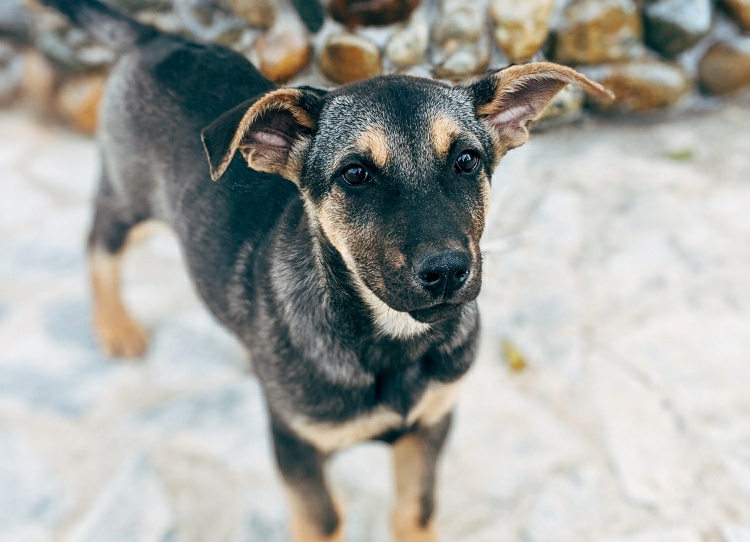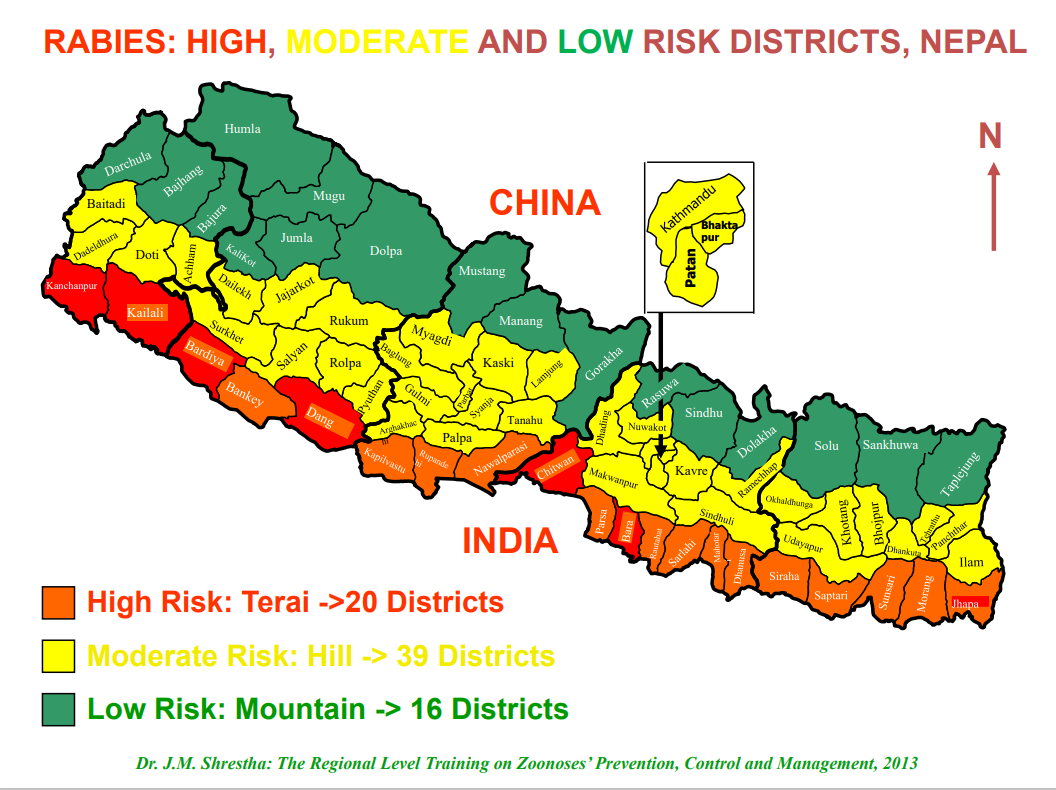
Rabies disease is continuously being reported from all districts in Nepal and people are also dying from this disease as well as being infected with it. Those who are infected are not only suffering from mental stress but also facing death due to a lack of vaccination and proper advice.
There is no treatment for rabies disease and it is transmitted to humans by animals like foxes, furrows, bats, domestic animals, dogs, and cats. Since dogs and cats live with people, this disease can be easily prevented by regular vaccination.
Currently, there are no real statistics on dogs in Nepal, it is estimated that there are approximately six million dogs. Rabies disease diagnosis and vaccine production work is being done in Nepal itself. However, due to its cost and time-consuming procedure, it is only available in the Kathmandu Valley.
Recent rabies outbreak
According to geographical regions, the risk of getting rabies is higher in terai regions and low in
mountain regions. Although hilly regions have moderate risk in Kathmandu Valley the incidents of dog bites and rabies cases are often seen in Terai regions. The recent rabies outbreak was seen in Kanchanpur, Accham and Kailali in cows, pigs and dogs. Brain samples of these animals were tested to confirm the rabies-positive case. Dr Naresh Prasad Joshi along with technicians played a great role in disease diagnosis and control of rabies outbreaks in these districts.

Figure: Risk of rabies according to geographical regions.
Strategic plan for rabies control and prevention
Several measures can be taken for rabies control and prevention. Here’s a list of recommended actions
• Vaccine Production Laboratory, Tripureshwor should produce more vaccine doses for animals.
• District livestock service offices and municipalities should arrange a budget for necessary rabies vaccination and sterilisation.
• There should be a budget allocation every year for necessary vaccinations in all districts and it should be compulsory to allocate a budget for the zoonotic disease (rabies) control programme.
• Awareness campaigns should be done using different media. Such as mass communication, posters, pamphlets, etc.
• Information about zoonotic diseases should be included in the school curriculum.
• Continuous research is needed to make vaccination and disease diagnosis effective. Nepal Agricultural Research Council should arrange technical officers or virologists, and scientists for research, disease diagnosis, animal vaccination and vaccine production for humans.
• Every year, on World Rabies Day, municipalities, district livestock service offices (service centres, sub-centres), Community development committees, society development groups and related non-governmental organisations should conduct a week-long vaccination campaign and make it public participation oriented. The District Animal Services Office should play the role of leadership in the above work.
Management strategies
It is not possible to make a vaccination and sterilisation plan without actual dog data. Although the statistics of other animals are available in every district veterinary office, the statistics of dogs are missing. Since there are animal service centres and sub-centres in every district, like other animals, the district animal service office, animal service department and municipality need to keep the statistics of dogs.
Moreover, vaccination of street dogs should be done regularly. Then, government agencies, government veterinary hospitals, veterinary colleges, and non-governmental organisations should conduct sterilisation programmes to reduce the number of dogs.
Likewise, awareness regarding the importance of dogs should be done and people should be inspired to adopt abandoned puppies rather than buy from pet shops.
Things to do after the bite of rabid animals
Rabies is 100 per cent preventable immediately after the bite from the dog. It is necessary to visit a nearby government hospital as soon as possible for the treatment. Here are the things that should be done:
- Wound treatment: Thorough wound wash for 15 minutes with soap and apply sprit or Tincture of Iodine. Do not suture the wound until 3 days.
- Vaccination
• Pre-exposure= 3 doses (0, 7 and 21/28 day)
• Post exposure= urgent
• First contact= 3 doses (0,3,7 day)
• Second and onwards = 2 doses ( 0, 3 days)
3. Use of hyperimmune serum in 3rd-degree bite
NOTE: No other treatment other than wound washing and immunization is effective and recommended.
Various organisations are working on rabies control. These organisations include NVSA HICAST, Sneha Care, Animal Nepal and Magic Marble Foundation.
























